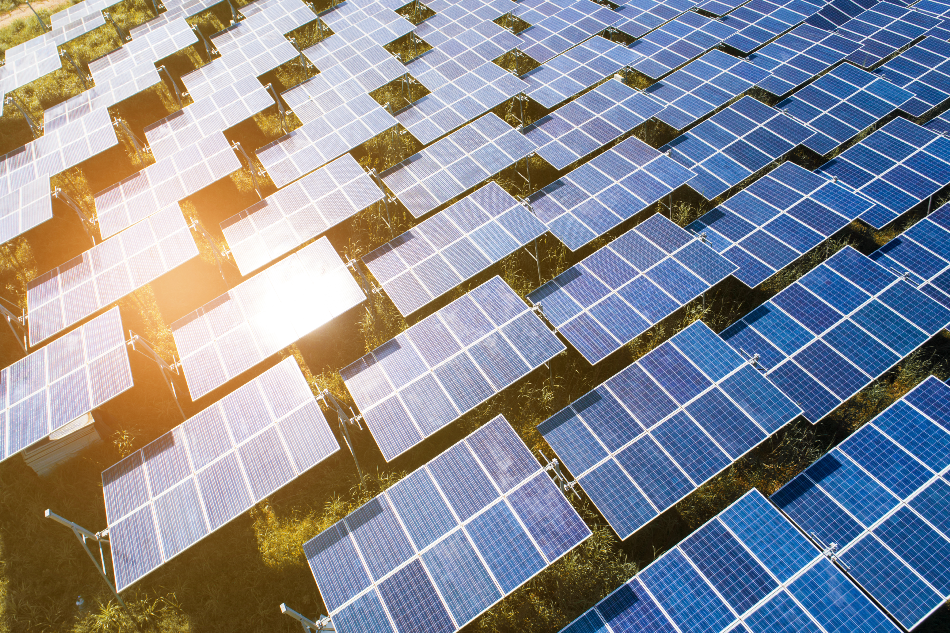
Thongsuk Atiwannakul / Shutterstock
Photovoltaic (PV) technology has progressed rapidly in terms of reliability, efficiency, and cost since the first PV systems were mass-produced in the early 2000s. The technology has now reached a point where solar energy is a practical power solution for robots in a number of applications. This progress can be expected to continue, and in the near future humanoid robots (which require large amounts of power to operate) could be powered entirely by integrated PVs.
Recent Progress in PV Technology
PV exploits the electrochemical properties of semiconductor materials to convert solar energy (photons) into electricity (electrons), in a phenomenon known as the photovoltaic effect. A typical system is comprised of solar modules made up of individual solar or photovoltaic cells, which combine to generate the required electrical power.
When the technology was first developed in the 1990s (and first brought to the mass market in the following decade), it gained a reputation for being prohibitively expensive. This was largely due to the cost of manufacturing semiconductor materials which were able to exploit the photovoltaic effect. However, this cost has reduced dramatically over the last decade, and analysts expect these cost reductions to continue (Bazilian et al., 2013).
PV efficiency is key to integrating the technology into humanoid robots. Without this, the relatively small surface area available for solar cells on the robot cannot convert enough energy to keep the power-hungry robot functioning. This is rapidly progressing as well, with even the cheaper perovskite cell achieving almost 24% efficiency, and specialist designs like the multi-junction (MJ) solar cell achieving as much as 40% efficiency.
Innovative design is also driving progress in terms of reliability. This is a key feature for humanoid robots, which must be able to move around and continue to operate with minimum maintenance. The main cause of degradation in PV cells is overheating, but this can be avoided by the use of conical cells that receive visible light (and its photons) but reflect infrared light (which carries heat).
Solar-powered Robots
The most common source of power for robots today is an internal battery (Kaur, 2013). Of course, this means that the robot can be powered by PV technology if the electricity source at its charging station is solar.
Integrating PV technology in robots so that they do not have to recharge, however, is more difficult. This is due to the efficiency limits of PV technology, which would mean that a power-hungry device such as a humanoid robot would require a large surface area covered in PV cells to power it – this, of course, would drastically reduce the humanoid robot’s functionality.
There are some robot technologies that do incorporate PV technology to avoid the need for recharging, however. A recent example is Tertill, developed by US company Boston Robotics. Tertill is a small weeding robot designed for rugged use in home gardens, running entirely on solar power. Key to its success, the PV technology in Tertill is managed smartly: the robot knows when power is low, and will not overrun its battery storage.
Solar-powered Humanoid Robots
Tertill’s smart power management will be the key to success in future humanoid robots utilizing PV technology. Ensuring the robot itself can monitor battery levels and slow down functions when they are low, or move into areas where it can generate more energy – for example using weather forecasting and GPS to stay out of the shade – will be key to maximizing the robot’s usefulness.
Further developments in PV technology can be expected to improve efficiency, reduce cost and increase the longevity of solar cells. These are all areas of progress required for the successful PV integration in humanoid robots.
Advances in humanoid robot technology will also increase battery storage and energy efficiency, to eventually meet up with PV technology so that the two can be integrated. The new iteration of Boston Dynamics' Atlas robot, Atlas Unplugged, has shown just how far humanoid robots can go in terms of energy use. The 155 kg robot can now carry its own battery source and is much better at efficiently using up that power.
While no humanoid robot has been developed with an integrated PV power source like Tertill yet, these robots can still be considered solar-powered if, like Atlas Unplugged, they carry a rechargeable battery pack which can be charged from a solar-powered energy source.
Sources
- Bazilian, M., Onyeji, I., Liebreich, M., MacGill, I., Chase, J., Shah, J., Gielen, D., Arent, D., Landfear, D. and Zhengrong, S. (2013). Re-considering the economics of photovoltaic power. Renewable Energy, 53, pp.329–338.
- Kaur, K. (2019). Basic Robotics - Power Source for Robots. [online] AZoRobotics.com. Available at: https://www.azorobotics.com/Article.aspx?ArticleID=139.
Disclaimer: The views expressed here are those of the author expressed in their private capacity and do not necessarily represent the views of AZoM.com Limited T/A AZoNetwork the owner and operator of this website. This disclaimer forms part of the Terms and conditions of use of this website.